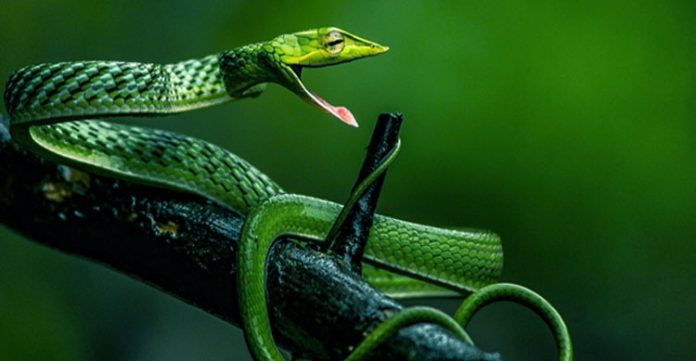Scientists in Pune along with some other experts across India recently discovered a new species of bacteria. The newfound bacteria is known to resist the approved antibiotics used in the treatment of snake bites.
Origin Of Microorganisms in Crucial For The Next Pandemic
As per the study, the bacteria is found in the scats or faecal of “vine snake”. It is a green coloured snake found mainly in the northern-western ghats. Scientists claim that the two bacteria have been discovered for the first time.
The researchers say that it is necessary to find out the origin of the microorganisms especially if they can lead to human diseases or the next pandemic. A team of scientists from Junnar, Pune and Chandigarh made the discovery which was accepted in February 2021 by “The Study”. It has been published in the Springer-Nature Journal Antonie Van Leeuwenhoek.
ALSO READ:-Snake slithers up man’s jeans, he stands still for 7 hrs!
RD Chaudhari from the department of zoology and research centre along with Shri Shiv Chhatrapati College, Junnar, Pune (SSCC) were the first ones to collect the faeces of the snake four years ago. They said that finding the bacteria is a huge discovery and requires further study. Currently, they don’t know how harmful or safe the new bacteria is. It is currently resistant to the existing antibiotics that they use for treatment.
But the most important point in this bacteria is that it can enter other species not only via snake bites. But also by the faeces of the snake that may be carried by the water during the rainy seasons.
Bacteria in Scat Represents Gut Health of the Snake
The faecal microbiome is studied to understand the gut microbes. As per the current study, the microbes from the scat may represent the microbes present in the gut of the snake. The role of this microbe in the snake gut needs to be established by further studies. The bacteria reported here comes under the family Planococcaceae. Some species of this family are pathogenic.
The study suggests that it is important to study the case of bacteria in the snakes as the chances of human contact with the animal has decreased. But the desire to interact with the animals has increased.


